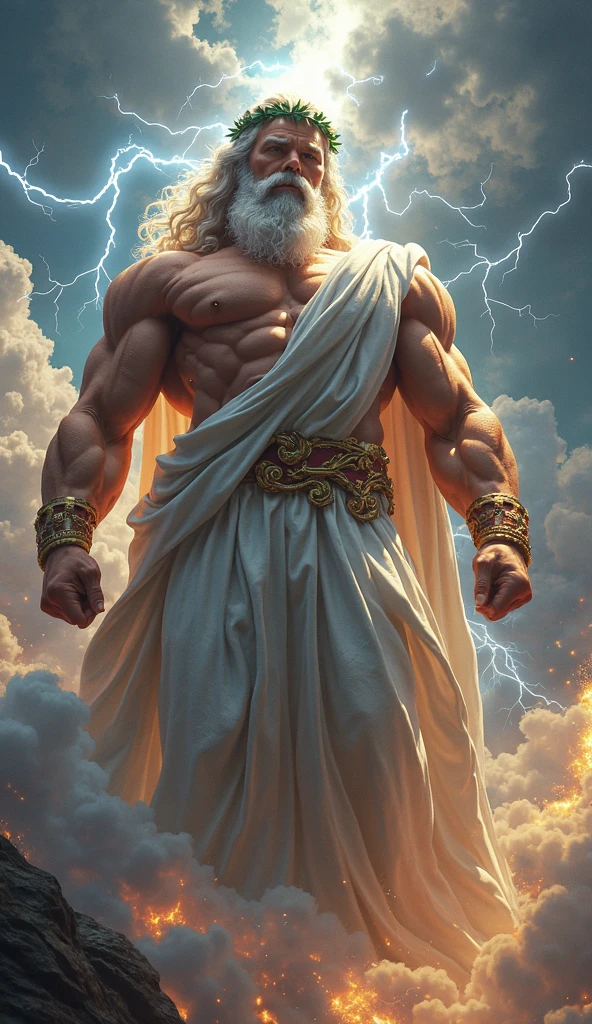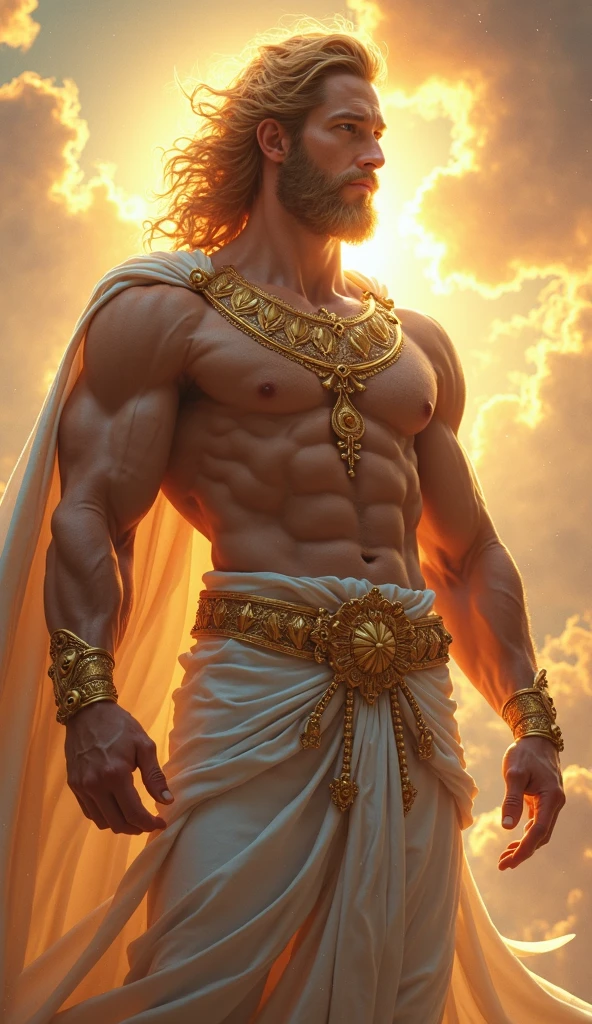Hera: The Queen Who Shaped Heaven and Earth
By Eduardo Gryn, Historian & Mythologist
Born to Rule: Hera’s Titan Roots
Hera, the formidable Queen of Olympus and goddess of marriage, began her life in an era of cosmic chaos. The youngest daughter of the Titans Cronus and Rhea, she was swallowed whole at birth by her paranoid father, who feared a prophecy that one of his children would overthrow him. For centuries, she remained trapped in Cronus’ belly alongside her siblings—until her brother Zeus tricked Cronus into regurgitating them, sparking the Titanomachy.
The Titanomachy: Hera’s Rise to Power
During the decade-long war against the Titans, Hera fought alongside Zeus and her siblings to establish the Olympian order. Ancient texts like Hesiod’s Theogony hint that Hera’s strategic mind rivaled Zeus’ strength. Post-victory, Zeus claimed the sky, Poseidon the seas, and Hera the earth—though she later merged her domain with Zeus’ as his queen. Their marriage wasn’t just romantic; it was a political merger that stabilized the cosmos.
The Divine Marriage: Love, Betrayal, and Power
Hera’s union with Zeus became the cornerstone of Greek cosmology—but it was far from peaceful. Myths describe their courtship as a 300-year game of divine cat-and-mouse. To win her over, Zeus transformed into a disheveled cuckoo bird during a storm. Hera sheltered it, only for Zeus to reveal himself and demand marriage as repayment. Their wedding night lasted 300 years, symbolizing the eternal bond of marriage.
Symbols of Sovereignty
Hera’s iconography reflected her dual roles as wife and ruler:
- Peacock: Her sacred bird, its “eyes” symbolizing her all-seeing vigilance.
- Diadem: A gold crown representing her authority over Olympus.
- Pomegranate: Emblem of fertility and marital blood bonds.
The cow and lily were also tied to her, linking her to nurturing and purity—though these were often weaponized in myths against Zeus’ lovers.
Hera’s Cosmic Role: Protector or Punisher?
As goddess of marriage, Hera safeguarded marital oaths, fertility, and childbirth. Yet her myths paint her as vengeful, particularly toward Zeus’ countless lovers and illegitimate children. This duality reveals ancient Greece’s ambivalence toward marriage: idealized as sacred, yet fraught with inequality and betrayal.
Sacred Sites and Cult Worship
Hera’s worship centered on three key sites:
- Argos: Home to the Heraion, one of Greece’s largest temples.
- Samos: Her alleged birthplace, where rituals reenacted her sacred marriage.
- Olympia: Hosted the Heraia, all-female athletic games in her honor.
At these sites, women prayed for marital harmony, while men appeased her to avoid her wrath.
The Darker Side of the Queen
Hera’s vendettas became legendary. She tormented Heracles (Zeus’ son with Alcmene) by sending snakes to his crib and later driving him mad. She turned Io into a cow, pursued Leto to prevent Apollo’s birth, and cursed Echo to only repeat others’ words. These myths reflect societal fears of female rage and the precariousness of marital loyalty.
Hera and the Hero’s Journey
Paradoxically, Hera’s persecution of heroes like Heracles and Jason often catalyzed their legendary feats. By opposing them, she inadvertently shaped their destinies—a narrative device highlighting her role as both destroyer and unwitting architect of greatness.
Trivia: Hera’s Hidden Layers
- Her name may derive from hōra (“season”), linking her to cycles of nature and time.
- In some regions, she was worshipped as a war goddess—Sparta invoked her before battles.
- The term “junonia” (from her Roman name Juno) describes seashells with pearl-like interiors.
Hera: The Queen Who Held Olympus Together (and Tore It Apart)
Olympian Politics: Hera’s Divine Diplomacy
As Queen of Olympus, Hera wasn’t just Zeus’ wife—she was his equal in ambition. Their marriage symbolized order, but their clashes defined Greek mythology’s juiciest drama.
The Sacred Marriage (Hieros Gamos)
Every year, the Greeks reenacted Hera and Zeus’ union in the Hieros Gamos ritual. On the island of Samos, priests carried her statue to Zeus’ temple, “marrying” them to renew cosmic harmony. It was part romance, part political theater—and 100% Hera’s PR move to remind Olympus who ruled.
Alliances and Rivalries
Hera played chess while others played checkers:
- Athena: Allied with her against Troy but clashed over heroes like Heracles.
- Poseidon: Joined forces to overthrow Zeus (spoiler: it failed).
- Hephaestus: Her son, whom she once threw off Olympus for being “ugly.” Family therapy was needed.
Vengeance Incarnate: Hera’s Most Infamous Myths
Hera’s wrath wasn’t petty—it was strategic. Each act of vengeance reinforced her role as enforcer of marital fidelity.
The Heracles Saga
When Zeus fathered Heracles with Alcmene, Hera unleashed a 12-labors-worth of hell:
- Sent snakes to kill baby Heracles (he strangled them).
- Drove him mad, making him murder his family.
- Sabotaged his labors, like sending crabs to aid the Hydra.
Yet Heracles’ triumphs only elevated Hera’s rep—she became the obstacle every hero had to outsmart.
Leto’s Agony
Hera banned the Titaness Leto from giving birth on any land, forcing her to flee to Delos (a floating island). She even delayed Leto’s labor for nine days, ensuring her son Apollo would forever resent Hera. Petty? Maybe. Effective? Absolutely.
The Trojan War: Hera’s Revenge on Paris
When Paris chose Aphrodite over Hera in the Judgment of Paris, the Queen of Olympus vowed Troy’s destruction. She manipulated battles, broke truces, and even seduced Zeus to distract him. In the end, Troy burned—a testament to Hera’s long memory.
Cult of Hera: Temples, Rituals, and Feminist Undertones
Hera’s worship wasn’t just about appeasement—it celebrated female agency in a patriarchal world.
The Heraion of Argos
Her sanctuary in Argos was Greece’s answer to the Taj Mahal. The Heraion, a colossal Doric temple, housed a gold-and-ivory statue of Hera seated beside Zeus. Women flocked here for the Heraia festival, offering woven peplos robes to gain her favor in marriage.
The Daedala Festival
Every 60 years, Boeotians celebrated Hera’s reconciliation with Zeus by burning an oak effigy. The ritual symbolized marital renewal—and subtly warned husbands not to cheat. Ancient marriage counseling, anyone?
Hera in Art: From Regal to Relatable
Classical Depictions
Greek artists painted Hera as austere and matronly, often holding a pomegranate or scepter. The Barberini Hera statue (5th century BCE) shows her with a diadem and stern gaze—no nonsense, all authority.
Renaissance Reinvention
Painters softened her edges. In Rubens’ Juno and Jupiter, she’s a voluptuous figure calming a thunderstorm. By the 1800s, she became a symbol of Victorian-era “ideal womanhood”—a far cry from her mythic rage.
Trivia: Hera’s Hidden Power Moves
- Her sacred animal, the peacock, got its “eyes” when she placed her loyal servant Argus’ 100 eyes on its tail.
- In Sparta, she was worshipped as Hera Areia (“Warlike Hera”)—proof even marriage gods packed a punch.
- The month June (from her Roman name Juno) is considered lucky for weddings—thanks to her!
Hera’s Divine Arsenal: The Queen’s Cosmic Authority
Hera’s Godly Domain: More Than Just Marriage
As Queen of Olympus and goddess of marriage, Hera’s powers extended far beyond wedding vows. She shaped destinies, commanded loyalty, and enforced cosmic balance—often with an iron fist.
1. Authority Over Marriage & Oaths
Hera could:
- Bless unions with fertility and harmony.
- Curse adulterers with madness or sterility (ask Zeus’ lovers).
- Enforce sacred oaths, punishing oath-breakers with plagues or disasters.
Her most infamous curse? Stripping Leto of safe childbirth, forcing her to wander until Apollo’s birth.
2. Sovereignty Over Childbirth
Though Artemis oversaw labor, Hera controlled the legitimacy of birth. She delayed Heracles’ delivery to rob him of the Mycenaean throne and cursed Echo to lose her voice—a cruel reminder of her influence over life’s beginnings.
3. Divine Weather Manipulation
Hera could summon storms to punish foes. During the Trojan War, she unleashed hurricanes to scatter the Trojan fleet. Her rage literally changed the forecast.
Feats of Fury: Hera’s Most Legendary Acts
Hera didn’t just reign—she intervened. Here’s how she reshaped myths:
1. The Creation of the Milky Way
When Zeus placed his infant son Heracles at her breast to steal immortality, Hera shoved him away. Her spilled milk became the Milky Way—a galactic reminder of her refusal to be manipulated.
2. The Seduction of Zeus (Trojan War Edition)
To distract Zeus from aiding Troy, Hera borrowed Aphrodite’s girdle (a love charm), bathed in ambrosia, and seduced him on Mount Ida. While they “bonded,” Poseidon rallied the Greeks to victory. Strategy meets seduction.
3. Cursing the Oracle of Delphi
After the oracle sided with Zeus during their marital spat, Hera cursed it to deliver only cryptic prophecies. The result? Centuries of confused mortals and tragic misunderstandings.
4. The Gigantomachy’s Turning Point
When the Giants threatened Olympus, Hera tricked Porphyrion into lusting after her. Distracted, he was struck down by Zeus’ lightning. Even in battle, her greatest weapon was her wit.
Hera’s Tools of Power: Symbols & Artifacts
The Queen’s gear wasn’t just for show:
The Diadem of Olympus
Her golden crown channeled divine authority, letting her command lesser gods and suppress rebellions. When she wore it, even Zeus treaded carefully.
Peacock Chariot
Drawn by peacocks with hypnotic plumage, this chariot could traverse realms. Its “eyes” surveilled mortals and gods alike—a divine panopticon.
Weaknesses: The Queen’s Kryptonite
Even Hera had limits:
- Zeus’ Thunderbolts: Her husband’s power eclipsed hers, forcing妥协.
- Her Own Pride: Blinded by vengeance, she often escalated conflicts (e.g., prolonging the Trojan War).
- Sacred Animals: Harming a peacock or cow weakened her temporarily.
Trivia: Hera’s Hidden Feats
- She invented the constellation Crab (Cancer) to honor the crab sent to battle Heracles.
- The term “heraion” refers to temples dedicated to her—over 40 existed in ancient Greece.
- In Roman myth, her counterpart Juno had her own “army” of storm spirits called the Tempestates.



